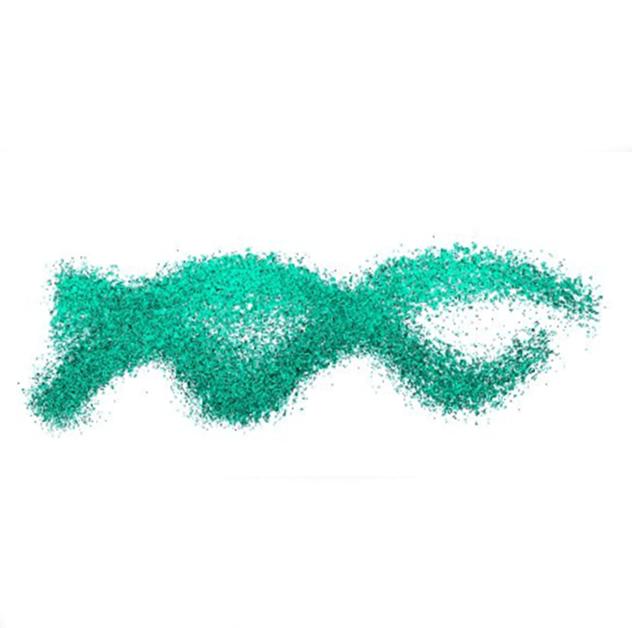NSF funds UC San Diego plan to generate — and study — the world’s first high-intensity laser pulses shaped like a corkscrew

Credit: Yin Shi PhD, University of California San Diego
University of California San Diego researchers have calculations for how to create high-intensity twisted laser beams – a flavor of laser pulse the world has likely never seen. These researchers also have done the math on how to use these corkscrew shaped laser pulses to do cutting-edge research. Finally, they have predictions on how the materials that they plan to “drill” into with corkscrew light pulses will respond.
Currently, all this work lives in the domains of theory and supercomputer simulations. But that’s about to change, thanks to funding from the National Science Foundation (NSF). A new grant will allow UC San Diego researchers to partner with experimentalists and actually run experiments probing interactions between high intensity twisted light and matter at Europe’s new, cutting edge Extreme Light Infrastructure (ELI) facilities in Romania and the Czech Republic. This is the first NSF grant to fund US-based researchers to test their theoretical work at ELI facilities.
Alexey Arefiev, a UC San Diego mechanical and aerospace engineering professor, is the Principle Investigator on the three-year NSF grant. The bulk of the experimental work will be done at the Extreme Light Infrastructure for Nuclear Physics (ELI-NP) in Romania, which recently premiered its 10 Petawatt high power laser system.
“It’s very difficult to make high-intensity twisted light. Conventional methods for twisting light are not applicable,” said Arefiev. “We are thrilled to have these opportunities. You must experimentally test your theoretical work, as this is the only way to improve your understanding of how nature actually works.”
Fundamental insights for nuclear physics and astrophysics could emerge from this work. The research could also lead to insights useful for non-invasive tumor therapies. In particular: the twisted light could be used to improve the ion beam characteristics needed for proton therapies.
“For years, Alexey Arefiev has been at the forefront of modeling work of light-matter interactions at extreme intensities. The opportunity to test this theoretical work will move the entire field of light matter interactions at extreme intensities forward. This is a great example of the very best that international research collaborations can offer,” said Vyacheslav (Slava) Lukin, a Program Director for the Plasma Physics program at the National Science Foundation.
The unique collaboration grew out of a US State Department effort to encourage international scientific collaboration through a US-ELI dialog.
The UC San Diego team will partner with a team led by Dan Stutman, a Johns Hopkins University research scientist who is also senior scientist and head of nuclear physics laser experiments at ELI-NP. The theoretical work at UC San Diego will also help to guide and benchmark ongoing research on high-intensity and high-energy twisted light at the ELI-NP and CETAL-PW laser facilities in Romania – work which is led by Stutman and funded by the Romanian Ministry for Research and Innovation.
Corkscrew Laser Pulses
The theoretical roadmap for creating the corkscrew light builds on work done by Yin Shi, a post-doctoral researcher in Arefiev’s Relativistic Laser-Plasma Simulation Group at the UC San Diego Jacobs School of Engineering and a former recipient of the Newton International Fellowship from the Royal Society (UK).
“We are finally going to find out what we do and do not understand about corkscrew light. This chance to actually create, study and test these special laser pulses is an incredible opportunity both intellectually and in terms of my career,” said Shi. “l look forward to making the very most of the ELI lasers and research teams.”
Once the corkscrew light is generated, Arefiev and his team will work with experimentalists to ensure that these high-intensity laser pulses interact with the materials they are probing in ways that generate magnetic fields that have never before been produced. This involves ensuring that the orbital angular momentum that gives these ultra-short pulses their corkscrew shape is actually transferred to the plasma material.
Finally, the team has predictions on how the magnetic fields will affect the dynamics of ions.
“There is so much physics yet to be discovered. There is so much we don’t know about how laser pulses with orbital angular momentum will behave, how the orbital angular momentum will transfer over to plasma materials, and how that will affect ion transport,” said Arefiev. “Life is full of surprises, this experimental work could lead to many new discoveries.”
###
Media Contact
Daniel Kane
[email protected]
Original Source
http://jacobsschool.




